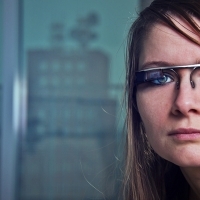The Challenges of Wearable Tech: What It Means for QA/Test

From Google Glass prototypes to the Fitbit Flex, Nike+ Fuelband or a Jawbone device, wearable tech is creating a lot of noise. Like any major shift in the tech industry, along with all the hype comes a fair share of criticism and concern. Here’s a look at some top wearable tech concerns for developers and what they mean for QA professionals.
Concern #1: “What’s a good user experience for a wearable tech device?”
Developing an intuitive user interface connected to a wristband or a pair of reality augmented glasses will be a massive challenge for developers. As Marvin Ammori writes in VentureBeat:
In designing for mobile…designers and developers learned that they could simplify even the desktop experience and better highlight the key information. By developing for Glass and other wearable technologies with small, always-on screens, developers and designers will begin stripping down mobile and desktop experiences to their core.
What this means for QA: The onset of wearable tech UIs will redefine usability testing for QA professionals. As Ammori says, user experiences will need to be stripped down to their core. The differences between usability testing an iOS app and an Android app will seem minimal when testing the usability of a wristband or a pair of glasses and how they connect to a mobile device.
Concern #2: “Wearable tech makes me look like an idiot!”
Some of the concern floating around right now focuses on whether wearable tech is hot or not. Eliza Brooke of TechCrunch shares her concern:
An unofficial poll of five TechCrunch writers and editors revealed little faith in finding decent-looking wearables. The most popular suggestion was this followed by this.
But the thing is, sometimes you love what you love, and it’s awesome, so you’re just going to wear it anyway…Even those TC eds admitted that they have an affection for dumb-looking wearables. Like USB belts. Wristbands. Cyber pants.
It sounds silly, but look and feel will be a main factor in the success of wearable technology. If the wearable technology isn’t aesthetically pleasing, users aren’t going to wear it.
What this means for QA: While the usability of the software itself will need to be tested, the experience of the device itself will need to be tested as well. Does it makes sense? Are the features easy to use and helpful? Do certain parts of the device get in the way on-the-go?
Concern #3: “Device fragmentation just got even more fragmented!”
Wearable technology makes developing for the Android ecosystem look like a piece of Key Lime Pie. Connected wristbands, watches, glasses, sneakers, clips ... the list goes on. This will add to the already massive app matrix. The way you develop software for a pair of sneakers and how they connect to a device opposed to how you develop a connected wristband will be vastly different.
What this means for QA: Wearable technology will require testing the device itself, its software, and how it communicates with other devices. This isn’t something you can automate. Wearable technology needs to communicate with your body and perform correctly under a series of unique daily scenarios. Because of this, in-the-wild testing will play an integral role in the success of wearables.
Functional, usability, and security problems will occur in ways testers have never seen before, and thorough testing is the only way to identify the bugs and glitches pre-launch.

